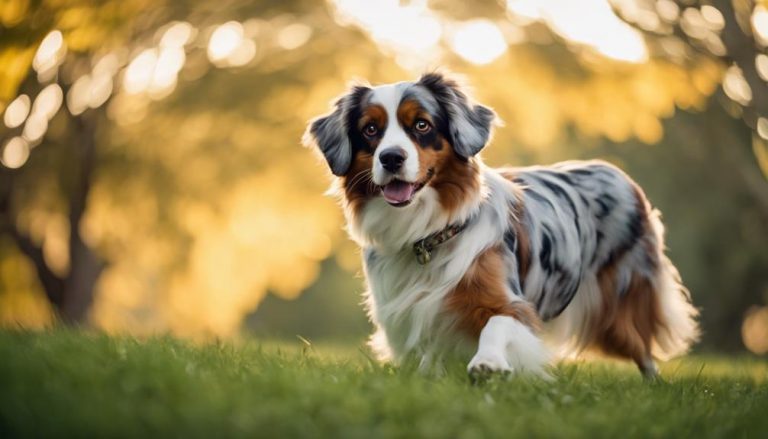Aussalier: Australian Shepherd Cavalier Mix
The Aussalier is a unique mix of the Australian Shepherd and the Cavalier King Charles Spaniel, known for its lively and loving temperament. These dogs typically weigh between 16-35 lbs and stand about 13-16 inches tall, with a life expectancy of around 12-13 years. Their coats are low-shedding, which means less hassle during grooming sessions. Aussaliers are smart and emotionally in tune, thanks to the traits they inherit from both parent breeds. They’re acknowledged by groups like the ACHC and DRA, showing their rising popularity among dog lovers. Understanding the Aussalier’s care, needs, and distinctive qualities highlights their great potential as pets.
Aussaliers combine the best of both worlds – the intelligence and energy of the Australian Shepherd with the affection and gentleness of the Cavalier King Charles Spaniel. This makes them excellent companions for various households. Their adaptability and engaging nature have made them increasingly sought after. Whether you’re living alone or with a family, an Aussalier can fit right into your life, offering both companionship and joy.
Key Takeaways
- Aussaliers blend Australian Shepherd and Cavalier traits.
- They weigh 16-35 lbs, standing 13-16 inches, medium-small.
- Known for smart, friendly, and easy-to-care-for coats.
Quick Facts
The Aussalier combines the Australian Shepherd and Cavalier King Charles Spaniel, creating a lively and smart dog. This mix makes the Aussalier an attractive option for people looking for an active yet affectionate pet. They weigh between 16-35 lbs and have a height of 13-16 inches, making them a good size for different types of homes, as long as they get enough exercise and mental challenges.
Aussaliers have a coat that doesn’t shed much, making them easier to care for than dogs that shed a lot. They usually live about 12-13 years. The mix of the Cavalier King Charles Spaniel not only affects their size and how much they shed but also makes them friendly and loving. This combination of traits means Aussaliers can fit well with many dog lovers.
Overview

Aussaliers are a unique blend of Australian Shepherd and Cavalier King Charles Spaniel, known for their mixed temperaments that merge the best of both worlds. They combine the intelligence and active spirit of the Australian Shepherd with the loving and gentle nature of the Cavalier King Charles Spaniel. This mix results in a dog whose personality might vary widely, making every Aussalier special in its own way.
These hybrids inherit a diverse set of characteristics, from the herding drive of the Australian Shepherd to the companion-focused traits of the Cavalier King Charles Spaniel. Understanding the traits of both parent breeds helps in knowing what to expect from Aussalier puppies. Their recognition by organizations like the American Canine Hybrid Club (ACHC) and Dog Registry of America, Inc. (DRA) confirms their status as a popular mixed breed. This recognition highlights the growing interest in Aussaliers as adaptable and charming pets.
Aussalier’s Unique Charm
Grasping the mix of traits from the Australian Shepherd and the Cavalier King Charles Spaniel helps us see why Aussaliers are such charming dogs. They’re smart, devoted, and flexible, making them great pets for families. Their small stature and unique merle coat also add to their appeal.
The intelligence and ease of training of an Aussalier come from the Australian Shepherd side, fostering a deep connection between the dog and its family. The Cavalier King Charles Spaniel contributes its friendliness and emotional sensitivity, making Aussaliers perfect companions. They’re incredibly good at feeling out the mood of their home and acting accordingly.
| Trait | Source Breed | Contribution to Charm |
|---|---|---|
| Intelligence | Australian Shepherd | Makes training easier |
| Loyalty | Both Parent Breeds | Deepens the bond with the family |
| Adaptable Nature | Cavalier King Charles | Fits into various homes easily |
This table shows how each breed adds to the Aussalier’s unique appeal, turning them into more than just pets, but cherished family members.
Origin Story

The Aussalier is a unique blend that comes from mixing the hard-working Australian Shepherd with the friendly Cavalier King Charles Spaniel. This mix is designed to create a dog with a great temperament that fits well in many homes. The journey to creating the Aussalier is a significant chapter in the world of designer dog breeds.
The Beginning of the Breed
The creation of the Aussalier was no accident. Breeders wanted a dog that combined the Australian Shepherd’s energy and the Cavalier King Charles Spaniel’s warmth. This goal led to the birth of a new, welcoming breed ideal for families.
Combining Two Breeds
The Aussalier stands out because it brings together the best of both worlds. The Australian Shepherd is known for its intelligence and zest for life. On the other hand, the Cavalier King Charles Spaniel is famous for its affectionate nature. The result is a dog that’s both joyful and easy to get along with.
Key Moments in History
The development of the Aussalier marks a noteworthy moment in the evolution of designer dogs. This breed showcases how thoughtful breeding can produce a dog that enhances the lives of its owners. Today, the Aussalier is celebrated for its balanced nature and has become a beloved companion in homes around the world.
Breed Genesis
The Aussalier is a mix of the Australian Shepherd and the Cavalier King Charles Spaniel. This hybrid was intentionally created to combine the best traits of both parent breeds. The goal was to create a dog with the Australian Shepherd’s energy and the friendly nature of the Cavalier King Charles Spaniel.
Knowing where this breed comes from helps us understand what to expect in terms of their behavior, adaptability, and health.
This crossbreed is designed with care, aiming to merge the energetic personality of the Australian Shepherd with the lovable temperament of the Cavalier King Charles Spaniel. Understanding the breed’s origins is key to appreciating the unique qualities an Aussalier brings to a family. It provides insight into their nature and what kind of care they will need.
Parent Breeds Fusion
To fully appreciate the Aussalier’s special qualities, we need to look at why breeders decided to mix the Australian Shepherd with the Cavalier King Charles Spaniel. This mix was not accidental but carefully planned to combine the best of both worlds. The Australian Shepherd brings its smarts, energy, and natural instinct for herding to the mix. On the other hand, the Cavalier King Charles Spaniel adds a dose of friendliness, good nature, and a size that’s easier to handle in a family home.
This deliberate mixing does more than just influence how the Aussalier looks, taking bits from both parents’ appearances. It also helps predict how they’ll act. Knowing what each parent breed brings to the table helps us understand what to expect from an Aussalier in terms of personality, health issues, and how to take care of them.
Historical Milestones
The Aussalier breed emerged from the deliberate mixing of the Australian Shepherd and the Cavalier King Charles Spaniel. The goal was to blend the best qualities of both breeds. This mix resulted in a dog breed that showcases the Australian Shepherd’s intelligence and herd managing skills along with the friendly, manageable size of the Cavalier King Charles Spaniel. Recognized by both the American Canine Hybrid Club (ACHC) and the Dog Registry of America, Inc. (DRA), Aussaliers have gained popularity for their unique combination of features.
Breeders have worked on breeding Aussaliers across multiple generations to stabilize the traits they desire most. This effort has helped solidify the Aussalier’s place among designer dog breeds. Depending on the breeder or location, you might hear them called Aussie Cavaliers. This variation in name underscores how the classification of hybrid breeds continues to evolve.
Medium-Small Breed
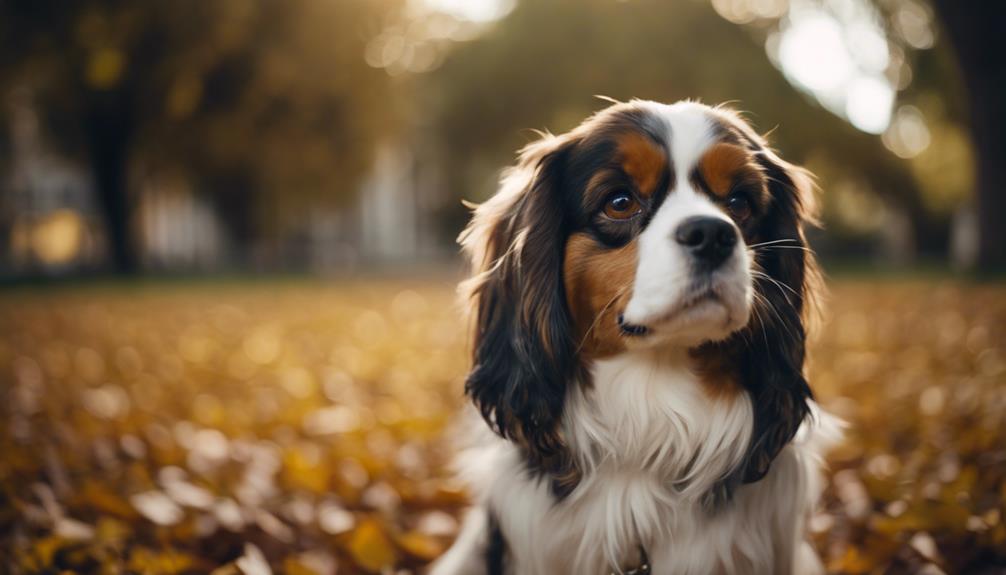
The Aussalier’s size, weighing between 16-35 lbs and standing 13-16 inches tall, plays a crucial role in how they should be cared for. This discussion will cover the essentials of their care, focusing on how their size affects their living environment, exercise needs, and health care practices. We’ll also touch on grooming techniques specific to their coat type to keep them looking and feeling their best.
- Size and Proportions
- Optimal Living Conditions
- Exercise Needs
Given their modest size, Aussaliers do not require a vast space to thrive but do benefit from a home that can accommodate their energy levels. An apartment with enough room for play and a nearby park for walks can be suitable for these dogs. Their exercise needs are moderate, with daily walks and playtime essential for their well-being. Regular grooming is also necessary to keep their coat in good condition, which might include brushing a few times a week and professional grooming sessions when needed.
Understanding the needs of an Aussalier is key to ensuring they live a happy and healthy life. Their size demands not just physical care but also an environment that stimulates them mentally. Regular interaction and play are as important as their physical exercise requirements.
When it comes to grooming, using the right tools and products can make a significant difference. A brush suited for their coat type and a mild dog shampoo are essentials. Providing this level of care ensures that your Aussalier not only looks great but is also comfortable and healthy.
Size and Proportions
Aussaliers fall into the medium-small category, with a weight range of 16-35 lbs and a height of about 13-16 inches at the shoulder. They are compact and easy to take along, fitting well into many different living situations.
Their size and build result from carefully combining qualities from their parent breeds to achieve a sturdy and proportionate body. Aussaliers are not only good-looking but also lively and active. Despite their smaller size, they are strong and agile, showcasing the successful mix of their parents’ best traits, making them adaptable to various activities and environments.
Optimal Living Conditions
Medium-small dog breeds like Aussaliers thrive in spaces where they can move freely and play. Their small size means they can live comfortably in smaller homes or apartments, but they still need regular physical activity and mental stimulation to stay happy and healthy. It’s important for these dogs to have interactive games and puzzles that challenge their intelligence and keep them engaged. A household that includes daily walks and access to a secure outdoor area is ideal.
Aussaliers are versatile and can adapt to different climates, but it’s vital to protect them from extreme heat or cold. A well-rounded diet, consistent grooming, and regular vet visits are crucial for their well-being. In short, Aussaliers make great family pets when their needs for exercise, mental stimulation, and care are met.
Exercise Requirements
Understanding how to keep medium-small dog breeds, like Aussaliers, healthy is critical. This includes daily activities like walking and playtime that are key for their physical and mental well-being. Aussaliers need a moderate amount of exercise to stay happy and healthy. Taking them for walks every day and setting aside time for play keeps them physically fit and mentally sharp.
In addition to physical activities, mental stimulation is crucial. Using interactive toys and engaging in games helps keep their minds active, contributing to their overall health. Agility training is another great way to provide both physical and mental challenges for them. Sticking to a regular exercise schedule can prevent behavioral problems and ensure Aussaliers lead a fulfilling life.
It’s not just about making sure they move around; it’s about creating a bond and understanding their needs. This approach helps in preventing issues before they start and ensures your Aussalier is both happy and healthy.
Health Considerations
Caring for Aussaliers, a blend of medium-small dog breeds, is essential due to their unique health requirements and potential inherited issues. These dogs, weighing 16-35 lbs and standing 13-16 inches tall, typically live for 12-13 years. Keeping them healthy involves vigilant monitoring and care.
Because Aussaliers come from a mixed breed background, they may be tough against some health problems but could inherit others, such as deafness or blindness related to the Australian Shepherd’s Merle gene. This situation highlights the need for regular health check-ups and genetic tests when possible. Being proactive about the health of Aussaliers helps prevent inherited diseases and improves their life quality.
Grooming Essentials
Proper grooming is crucial for keeping your Aussalier looking great and feeling healthy. Their special coat, built to withstand various weather conditions, needs regular brushing. This not only maintains its shine but also helps control their minimal shedding. Such care helps prevent skin issues, keeping their fur smooth and vibrant.
It’s also vital to keep their ears clean to avoid infections, a problem often seen in dogs. Checking and cleaning their ears regularly helps remove any dirt or wax, ensuring their ears stay healthy.
Lastly, don’t forget about their nails. Regular nail trimming is necessary to keep them comfortable and prevent any pain while walking or running, allowing them to stay active and happy.
Aussalier’s Sociable Nature
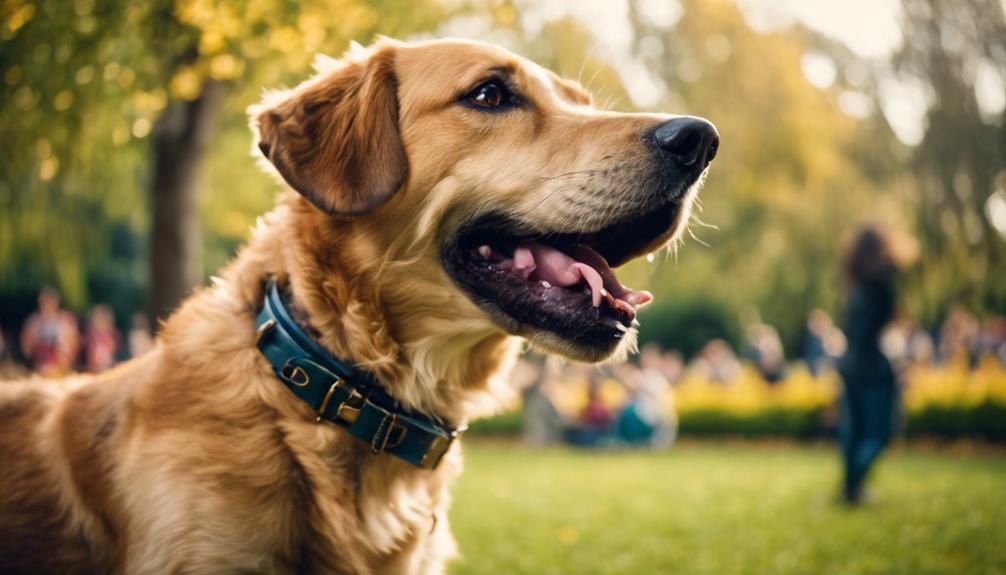
The Aussalier breed’s friendly nature is a key part of their behavior, making it essential to look at how they interact and fit into various settings. This includes their need for interaction, their ability to get along with other animals, and how their friendly traits affect family life, especially with kids. We’ll cover:
- Need for Social Interaction
- Getting Along with Other Animals
- Friendliness Towards Families and Kids
Need for Social Interaction
Aussaliers thrive on companionship. They’re not the type to sit idly by; they actively seek out company, whether it’s with humans or other pets. This craving for interaction means they’re happiest in environments where they can engage and connect regularly.
Getting Along with Other Animals
Their easygoing nature extends to their relationships with other pets. Aussaliers generally have no trouble fitting into a home with existing pets. Their ability to adapt and befriend other animals makes them a great addition to multi-pet households.
Friendliness Towards Families and Kids
Aussaliers shine in family settings. Their gentle demeanor and patience make them excellent companions for children. They’re the type of dog that can help teach kids about responsibility and compassion, all while being an affectionate member of the family.
Social Interaction Needs
Aussaliers are super social and love being around people and other pets. They form deep connections with their families, showing how critical it is for them to interact every day.
These dogs are perfect for active homes that can keep up with their need for fun and friendship. Starting socialization early is key to making sure they grow up to be well-behaved. This early training helps avoid behavior problems and supports their friendly nature in a positive way.
Compatibility With Other Pets
Aussaliers are known for their friendly nature and get along well with other pets in the house. Their love for social interaction makes them great companions not just for humans but for other animals too. With an outgoing personality that includes being playful and approachable, they quickly become friends with other pets.
Early exposure to different animals helps Aussaliers become comfortable and reduces any chances of conflict. This makes living in a home with multiple pets smoother and more enjoyable for everyone.
Their ability to bond with other animals adds a positive dynamic to any pet family, making them not just welcoming to new faces but cherished members of the pet community.
Family and Child Friendliness
Aussaliers are known for being great family dogs, especially in homes with kids. They’re naturally friendly and love being around people, which makes them fit right into family life. These dogs build strong connections with their human families, showing loyalty and affection that make them an integral part of the household.
Their playful and gentle nature is perfect for the lively atmosphere of a home with children, ensuring everyone gets along well. Through early socialization, Aussaliers adapt well to living with kids and other pets, making them a valued addition to any family.
Training for Social Skills
Starting socialization training early is crucial for Aussalier puppies to help them get along well with other animals and people. It’s important for them to experience different places and situations, which helps them learn how to behave in social settings.
Using positive reinforcement in these training sessions encourages Aussaliers to be friendly and outgoing. Teaching them good manners early on is key to developing their social skills. Keeping up with training regularly ensures they stay comfortable and well-behaved in any setting.
This not only makes them more sociable but also improves their well-being and ability to adapt to new social environments.
Managing Stranger Introductions
Aussaliers are known for their friendly nature, making them great at meeting new people. It’s essential to start socializing them when they’re young, so they feel comfortable around others. Use treats and praise to teach them the right way to say hello. This method encourages them to be polite when they meet someone new.
Even though Aussaliers usually can’t wait to make new friends, you need to keep an eye on them to make sure everything goes smoothly. They do best in calm and structured settings, which helps them get used to new faces without stress. This approach highlights the need for a thoughtful way of introducing them to new people.
Aussalier Wellness Concerns
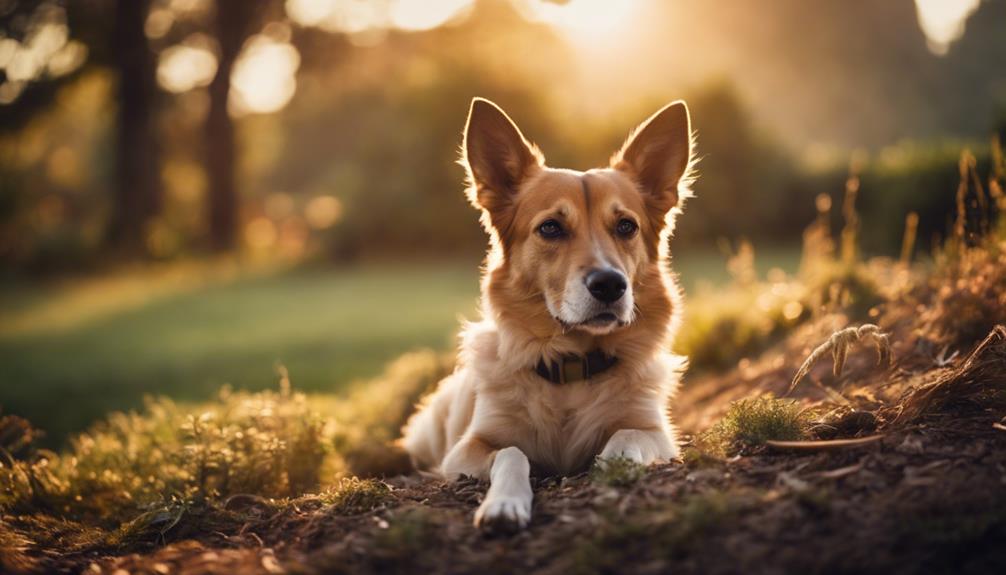
When focusing on the well-being of Aussaliers, it’s key to consider both their genetic makeup and the environment they live in. A proactive approach to their common health issues, coupled with preventive measures, can significantly improve their life span and overall health. A balanced diet and regular exercise are fundamental in reducing health risks, highlighting the need for comprehensive care.
- Health Challenges
- Tips for Preventive Health
- Diet and Physical Activity
Aussaliers, a delightful mix of Australian Shepherd and Cavalier King Charles Spaniel, may inherit health concerns from both breeds. This includes potential for heart issues, eye problems, and hip dysplasia. Knowing these risks helps in monitoring their health closely and taking action early.
Preventive health tips are vital. Regular check-ups with a vet, vaccinations, and parasite control can prevent many diseases. It’s also beneficial to maintain dental hygiene and keep an eye on their weight.
Exercise and a good diet are not just about preventing obesity; they’re about keeping your dog happy and active. Choose a diet that suits their age, size, and energy level. Combine this with daily walks, playtime, and mental stimulation to keep them sharp.
Common Health Issues
Aussaliers, a mix between Australian Shepherds and Cavaliers, can inherit health issues like deafness and blindness due to the Merle gene from their Australian Shepherd side. This gene makes it critical to watch for signs of eye problems such as cataracts. Since Aussaliers are a relatively new breed, not much research has been done on their specific health concerns. However, understanding the health issues common in their parent breeds can help owners anticipate and manage potential problems.
Regular vet visits are key. They ensure that any inherited conditions are caught early, which can greatly improve an Aussalier’s quality of life and longevity. This breed’s health requires attentive care, but with the right approach, Aussaliers can lead happy, healthy lives.
Preventative Care Tips
Knowing the health risks common to Aussaliers helps in planning how to prevent these issues. Since Aussaliers can inherit deafness and blindness due to the Merle gene from the Australian Shepherd side, it’s crucial to keep an eye out for early symptoms. Regular check-ups with a vet are key, ensuring early detection of cataracts and monitoring any changes in vision. Understanding the health risks from both parent breeds helps take a thorough approach towards prevention. With limited information on Aussalier health problems, being proactive in health monitoring and intervention is vital for the breed’s wellbeing and a high-quality life.
To tackle these health issues effectively, make sure to schedule frequent veterinary visits. These visits should focus on eye examinations and hearing tests, particularly as your Aussalier ages. Early detection of potential issues like cataracts can make a significant difference in treatment outcomes. Given the blend of health issues from the Cavalier King Charles Spaniel and the Australian Shepherd, a comprehensive care plan is beneficial. This approach ensures your Aussalier receives the best possible care, maintaining its health and happiness.
Exercise and Nutrition
Aussaliers thrive when they get enough exercise and eat a well-balanced diet. These dogs are full of energy, and without regular physical activity, they might start displaying unwanted behaviors. To keep them happy and healthy, owners should make sure they have daily walks and playtimes that are fun and engaging. It’s also crucial to adjust their food based on how big they are, how much they move, and their age to keep them in tip-top shape.
Watching how many calories they eat is key to avoiding weight gain, which can lead to joint issues and other health problems. A diet that matches their level of exercise helps keep them fit. Also, making sure they drink plenty of water, especially after running around or on hot days, is important for their overall health and to keep them feeling good.
Grooming Essentials
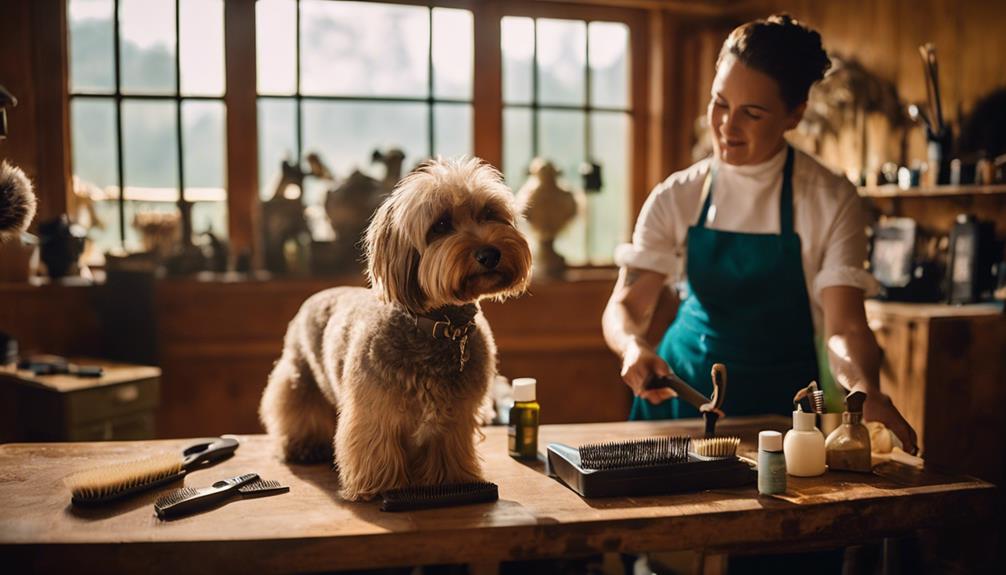
Caring for an Aussalier involves more than just the occasional bath; it’s about keeping them healthy and comfortable. Their unique coat and sensitive areas like their ears require specific attention. Here’s how to ensure your Aussalier stays in top shape:
Coat Maintenance is crucial. Regular brushing keeps their fur smooth and free from mats. It’s not just about looks—this practice removes dead hair and skin, promoting better skin health.
Keeping their nails trimmed is more than a cosmetic concern. Long nails can cause discomfort and even affect their walking posture. A routine trim can prevent these issues, ensuring your pet stays happy and mobile.
An often overlooked aspect is ear care. Aussaliers can be prone to ear infections due to their floppy ears. Cleaning their ears regularly prevents buildup that can lead to health problems, keeping your furry friend comfortable and infection-free.
In all, grooming your Aussalier is about more than just keeping them looking good. It’s about preventative care that ensures they lead a long, healthy life.
Basic Coat Care
Taking care of an Aussalier’s coat is essential for their overall well-being. Regular brushing is key to keeping their coat healthy and looking good. It not only spreads the natural oils across their skin and fur, making their coat shiny and less prone to knots, but it also allows you to spot any skin problems early on. It’s important to clean their ears often to avoid infections, especially since their floppy ears can trap moisture.
Even though Aussaliers have a coat that is resistant to bad weather and they don’t shed much, they can still produce dander. This means they might not be the best choice for people with allergies, requiring a bit more grooming effort to make things easier for everyone.
Nail Trimming Techniques
Keeping your Aussalier’s paws in top shape means regular nail trimming, a crucial part of their grooming routine. Use the right tools – dog nail clippers designed for this purpose – to avoid hurting your pet. When cutting their nails, do it little by little to dodge cutting too deep and hitting the quick, which could cause pain and bleeding. Being mindful not to cut this sensitive area helps prevent any discomfort for your pet.
Making the nail trimming session a positive one with praise and treats can make a big difference. This approach not only keeps their paws healthy but also helps your Aussalier associate grooming with good things. This method ensures a calm grooming experience for both you and your dog.
Ear Cleaning Routine
Keeping Aussaliers’ ears clean is vital for their health, especially because their floppy ears can trap moisture and dirt, leading to infections. To clean their ears, use a vet-recommended solution and gently wipe around the outer ear canal with a cotton ball. It’s important not to push the cotton ball deep into the ear to avoid hurting them.
During the cleaning, always look for any redness, bad smells, or unusual discharge, as these can be signs of an ear problem. Regular ear cleaning helps keep Aussaliers healthy and prevents ear infections. This practice is not just about cleanliness; it’s about making sure your dog stays comfortable and happy.
Brushing and Combing
Brushing and combing are key to keeping your Aussalier’s coat in top shape, ensuring it stays smooth and free from tangles. A regular grooming routine helps keep their fur looking its best and their skin healthy. Brushing gets rid of any knots and prevents the fur from matting, which can lead to discomfort and even skin problems for your dog.
Running a comb through your Aussalier’s coat not only removes loose hair but also spreads their skin’s natural oils, giving their coat a nice shine. It’s wise to choose the right grooming tools, like slicker brushes and metal combs, to handle their unique coat effectively, making sure your Aussalier looks and feels great.
Bathing Frequency
Keeping an Aussalier’s coat clean and healthy means giving them a bath every 4 to 6 weeks. This frequency can change based on how active they are or how much they play outside. It’s crucial to use shampoos made just for dogs to keep their skin from getting irritated and to keep their coat looking good. Regular brushing can cut down on how often baths are needed. This helps keep their skin and coat’s natural oils balanced.
For personalized advice on how often to bathe your Aussalier and what grooming products to use, talking to a professional groomer or vet is a smart move. They can suggest the best care routine based on your dog’s specific needs and health, making sure their grooming keeps them happy and healthy.
Dietary Recommendations
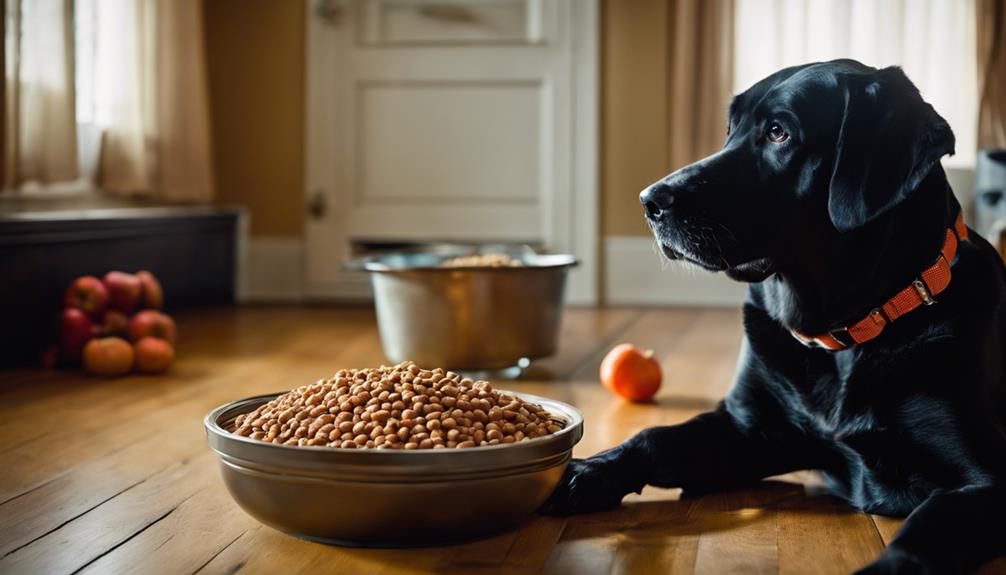
When considering the dietary needs of Aussalier dogs, addressing their health and well-being involves a few critical steps. It’s important to understand their nutritional needs, be aware of any food allergies, and maintain a regular feeding schedule.
Here are some important considerations:
- Nutritional Needs: A diet that supports the Aussalier’s muscle health, keeps their energy levels up, and promotes overall vitality is crucial.
- Common Food Allergies: It’s vital to know which ingredients might cause allergic reactions in Aussaliers and to avoid them.
- Recommended Feeding Schedule: Setting up a feeding routine that matches the dog’s age, size, and activity level helps in maintaining their health.
Caring for the dietary needs of Aussalier dogs means making sure their meals support their active lifestyle and physical health. A balanced diet helps keep them energetic and healthy. Knowing what foods could potentially cause allergies in your Aussalier is key to avoiding unwanted reactions. Moreover, a consistent feeding schedule tailored to their specific needs ensures they get the right amount of nutrition at every stage of life. By focusing on these aspects, you can help your Aussalier thrive.
Nutritional Needs
Aussaliers need a diet full of high-quality protein, essential fatty acids, and the right amount of calories to stay healthy and energetic. This breed loves to move, so a diet that supports their muscle growth and keeps them active is key. Adding omega-3 and omega-6 fatty acids to their meals is crucial for a shiny coat and healthy skin. Since they’re so active, it’s important to keep an eye on how much they eat to avoid weight gain and the health problems that come with it.
Including fresh fruits and vegetables in their meals provides necessary vitamins and minerals, promoting overall well-being. It’s a good idea to talk to a vet to get a diet plan that’s just right for your Aussalier, considering their age, size, and how much they exercise. This ensures they get exactly what they need to be at their best.
Common Food Allergies
Understanding and handling food allergies in Aussaliers involve knowing their dietary triggers and making the right food adjustments. These dogs, part Cavalier, might react badly to common allergens like beef, dairy, wheat, chicken, and egg products.
They could show signs like itching, skin rashes, ear infections, upset stomach, and persistent diarrhea. To manage these issues, it’s often advised to switch to dog foods with fewer ingredients or those that are hypoallergenic.
Starting an elimination diet or getting allergy testing done is key to identifying the exact causes of a dog’s allergic reactions. It’s critical to work with a vet to diagnose and come up with a plan that suits the dog’s dietary needs, ensuring they stay healthy and happy.
Recommended Feeding Schedule
Maintaining the health and happiness of your Aussalier involves a balanced diet, served twice a day with high-quality dog food suitable for their age. Adjust the amount of food based on your dog’s size, age, activity level, and health to keep them in top shape.
Puppies, in particular, need meals more often to fuel their growth and development. It’s crucial to steer clear of human foods that can harm dogs, like chocolate, grapes, and onions.
To ensure your Aussalier gets the nutrition they need, it’s a good idea to talk with a vet. They can provide a customized feeding plan that supports your dog’s overall well-being.
Frequently Asked Questions
Do Aussaliers Shed a Lot?
- Aussaliers shed minimally, with proper care.
- Regular brushing helps maintain their coat.
- Good grooming keeps home cleaner, less dander.
How Big Are Mini Aussaliers?
- Mini Aussaliers stand 13-16 inches tall.
- They weigh between 16-35 lbs, a small to medium range.
- Perfect for those seeking a compact, energetic companion.
Is a Cavalier a Good Family Dog?
- Cavaliers excel in family settings due to their loving nature.
- They adapt easily, fitting into various home environments smoothly.
- Their training is straightforward, making them great companions.
Are Aussies Good Family Dogs?
- Aussies shine with smart and active spirits.
- Training shapes them into loyal, loving family pets.
- Energy matches well with active household activities.

